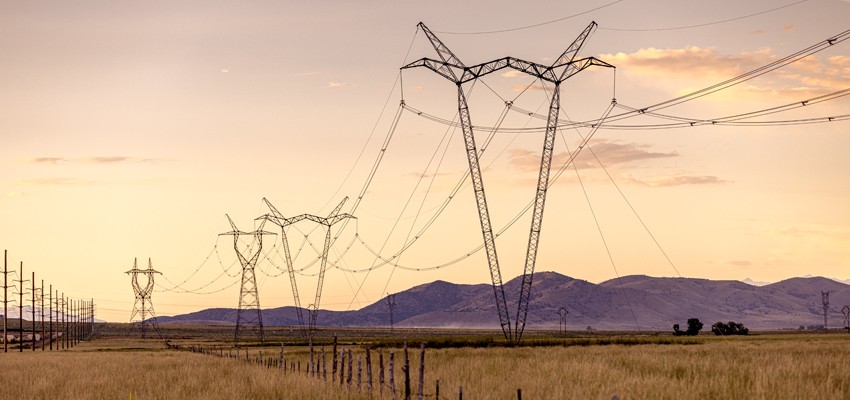PacifiCorp’s 2025 resource plan submitted to utility commissions

PORTLAND, Ore. — PacifiCorp filed today its 2025 Integrated Resource Plan with the six state utility commissions in the company’s service area. This follows a draft version that was circulated to public stakeholders Dec. 31, 2024, with updated information incorporating stakeholder feedback.
PacifiCorp has been publishing its resource plans since 1989. The public process takes about a year to conduct and is completed every two years, with a shorter review and update in the off years. It is an in-depth economic analysis and modeling exercise to identify a least-cost and least-risk portfolio of energy generation resources. Each plan can and does change over time, particularly the longer-range elements envisioned over a 20-year planning horizon.
The biennial long-term analysis of future customer energy needs shows a need for investment in seven resource types:
- Transmission infrastructure building on recent additions of two key segments of PacifiCorp’s Energy Gateway project. Upgrades and new investment are anticipated to increase energy transfer capabilities in both the Intermountain West and Pacific Northwest.
- Renewable solar resources, including 2,092 megawatts of utility-scale solar by the end of 2030, increasing to 4,765 megawatts by the end of 2045. Additionally, the plan includes 320 megawatts of new small-scale solar for Oregon by the end of 2030, increasing to 1,157 megawatts by the end of 2045.
- Renewable wind resources, including 2,267 megawatts of new wind generation by the end of 2030, increasing to 3,782 megawatts of cumulative new wind capacity by the end of 2045.
- New energy storage from batteries, including 1,634 megawatts of 4-hour storage, and 605 megawatts of 100-hour iron air battery storage by 2032, increasing to 3,073 megawatts by 2045. Total energy storage capacity of both types is anticipated to be 7,524 megawatts by 2045.
- Conversion of coal-fueled generating units to natural gas. This was completed in 2024 at Bridger Units 1 and 2. Conversion of other units is anticipated to occur as required by U.S. Environmental Protection Agency greenhouse gas regulations under Section 111(d) of the Clean Air Act.
- Significant demand response and energy efficiency programs. These are programs that help customers manage their energy efficiently and save money on their bills. The energy saved in these programs may be used elsewhere on the utility network and compares favorably in price with new power generation or wholesale power purchases. Cost-effective programs reviewed by utility regulators will seek to deliver 610 megawatts of energy efficiency from 2025 and through 2028, and 83 megawatts of demand response between from 2025 through 2028.
- Carbon capture technology. PacifiCorp will continue to evaluate the feasibility of carbon capture technology on Bridger Units 3 & 4 to comply with Wyoming state requirements.
The 2025 plan builds on PacifiCorp’s strong reliability by leveraging the diversity of resources that are available across its multi-state generation and transmission network. The plan shows a need for investments for reliability and low-cost electric service.
“Our Integrated Resource Plan is designed to determine the lowest-cost options for customers, adjusting for risks, future customer needs, system reliability, market projections and changing technology,” said Rick Link, senior vice president for resource planning, procurement and optimization. “We are grateful for public involvement by utility regulators, customers and other stakeholder groups to develop this plan.”
“We are in the midst of a fundamental remaking of our regional generation and transmission network, which has served our customers so well for decades,” Link said. “As the energy policies of the states we serve increasingly diverge, we will take the prudent actions necessary to expand our network and ensure the reliability and reasonable costs our customers expect and deserve.”
PacifiCorp recognizes that the basis for identifying a least-cost, least-risk portfolio varies across state jurisdictions, so the 2025 plan assesses the cost-effectiveness of individual resources considering the requirements specific to each jurisdiction. For this plan, three distinct sets of jurisdictional requirements were represented:
- Utah, Idaho, Wyoming and California, where cost-effective resources are a primary objective.
- Oregon, including compliance with energy and emissions requirements from House Bill 2021 (HB 2021); compliance with the Western Resource Adequacy Program (WRAP) and with Oregon’s small-scale renewable capacity standard.
- Washington, including compliance with the Clean Energy Transformation Act (CETA) and with WRAP capacity requirements for Washington.
Resources identified under each jurisdictional view are brought together into an integrated portfolio, while resources specific to individual states are assigned only to those jurisdictions in which they were identified as cost effective.
Developed through comprehensive data analysis and computer modeling of the future needs of customers, together with an assessment of available resource types, the Integrated Resource Plan yields a preferred portfolio of resource types across a 20-year planning horizon. The plan selects the least-cost, least-risk resource types, which will become the basis for a future Request for Proposals, a competitive bidding process that will select specific projects for later construction.
Learn more at PacifiCorp.com/IRP.